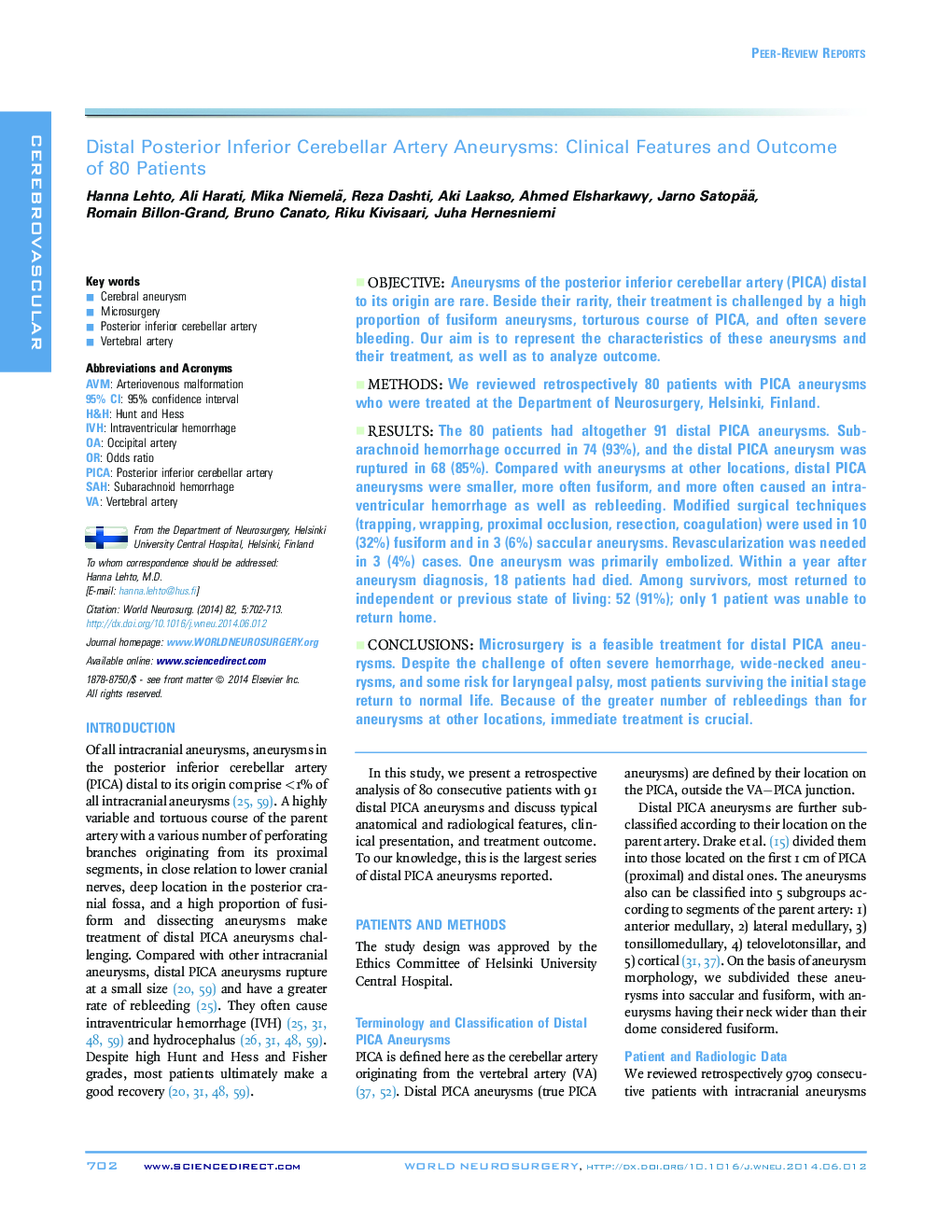| Article ID | Journal | Published Year | Pages | File Type |
|---|---|---|---|---|
| 3095316 | World Neurosurgery | 2014 | 12 Pages |
ObjectiveAneurysms of the posterior inferior cerebellar artery (PICA) distal to its origin are rare. Beside their rarity, their treatment is challenged by a high proportion of fusiform aneurysms, torturous course of PICA, and often severe bleeding. Our aim is to represent the characteristics of these aneurysms and their treatment, as well as to analyze outcome.MethodsWe reviewed retrospectively 80 patients with PICA aneurysms who were treated at the Department of Neurosurgery, Helsinki, Finland.ResultsThe 80 patients had altogether 91 distal PICA aneurysms. Subarachnoid hemorrhage occurred in 74 (93%), and the distal PICA aneurysm was ruptured in 68 (85%). Compared with aneurysms at other locations, distal PICA aneurysms were smaller, more often fusiform, and more often caused an intraventricular hemorrhage as well as rebleeding. Modified surgical techniques (trapping, wrapping, proximal occlusion, resection, coagulation) were used in 10 (32%) fusiform and in 3 (6%) saccular aneurysms. Revascularization was needed in 3 (4%) cases. One aneurysm was primarily embolized. Within a year after aneurysm diagnosis, 18 patients had died. Among survivors, most returned to independent or previous state of living: 52 (91%); only 1 patient was unable to return home.ConclusionsMicrosurgery is a feasible treatment for distal PICA aneurysms. Despite the challenge of often severe hemorrhage, wide-necked aneurysms, and some risk for laryngeal palsy, most patients surviving the initial stage return to normal life. Because of the greater number of rebleedings than for aneurysms at other locations, immediate treatment is crucial.
